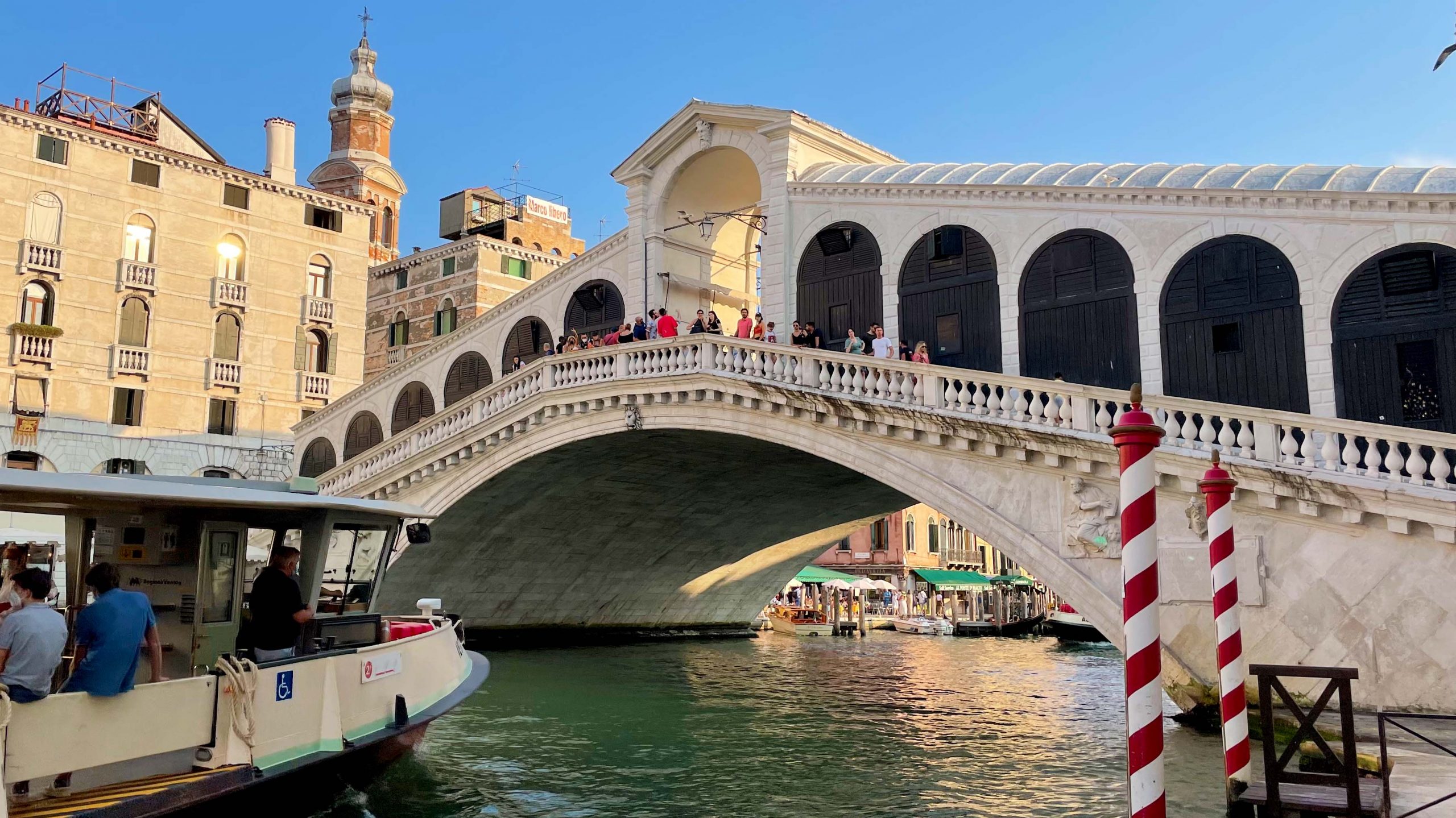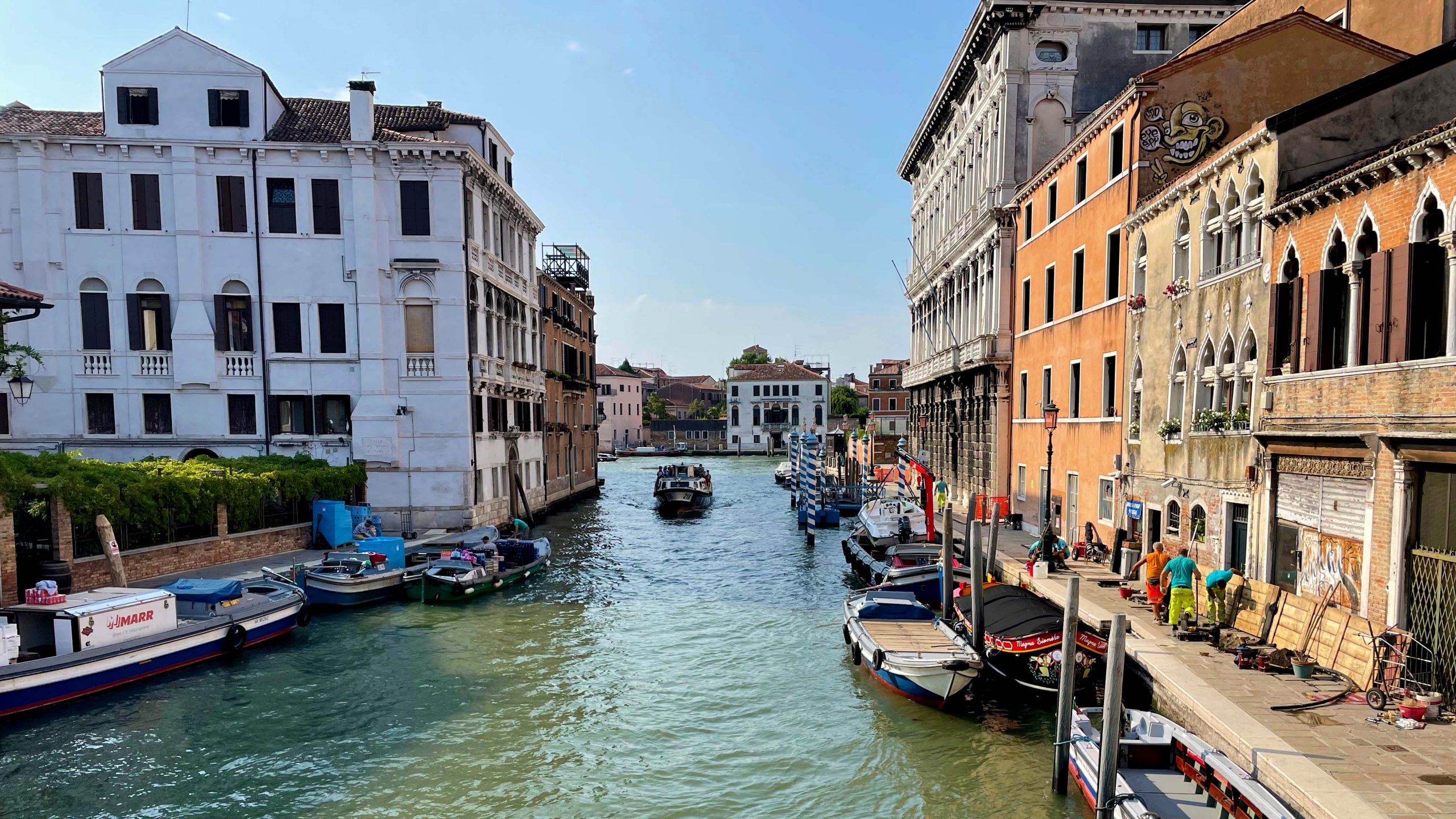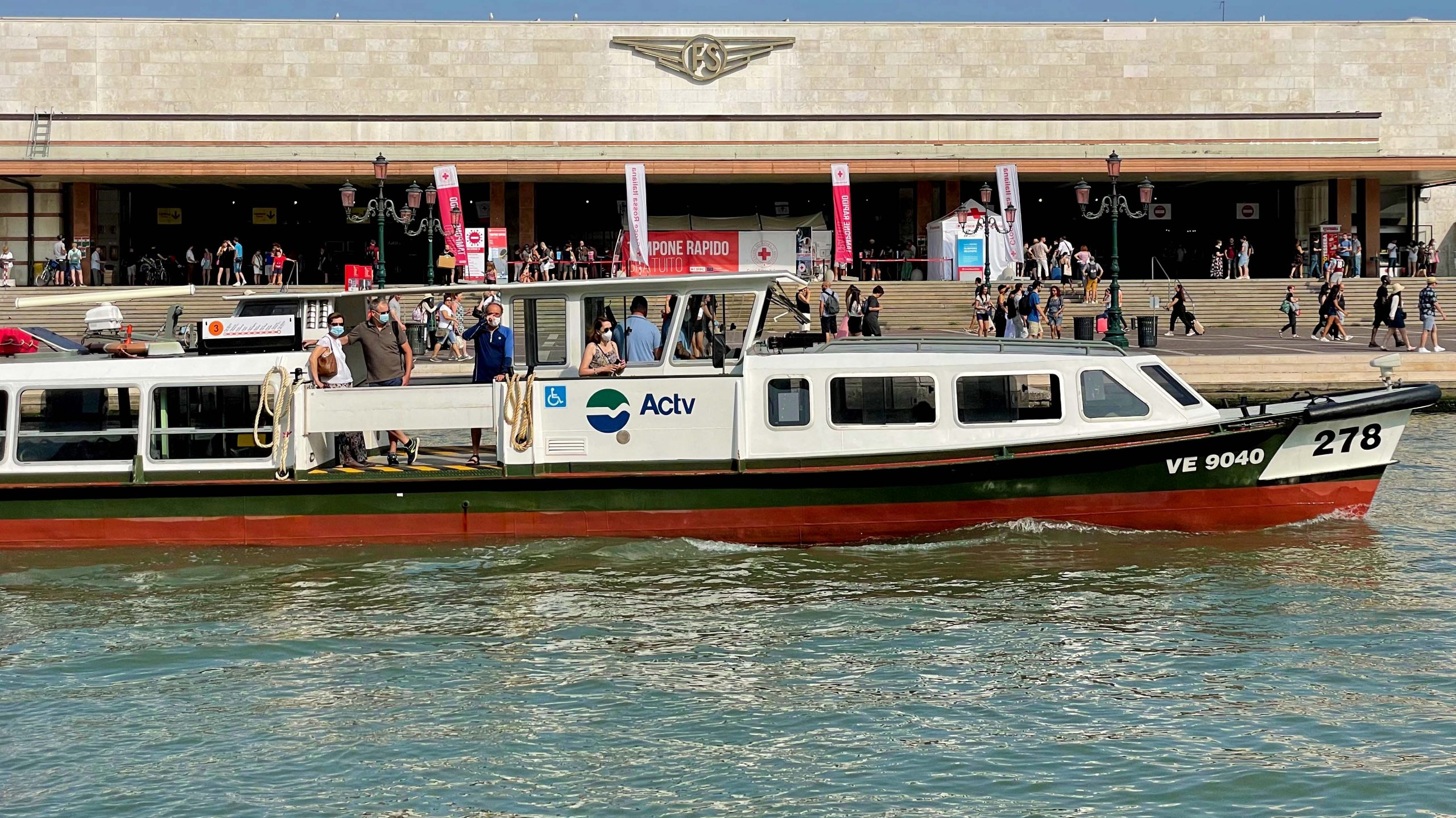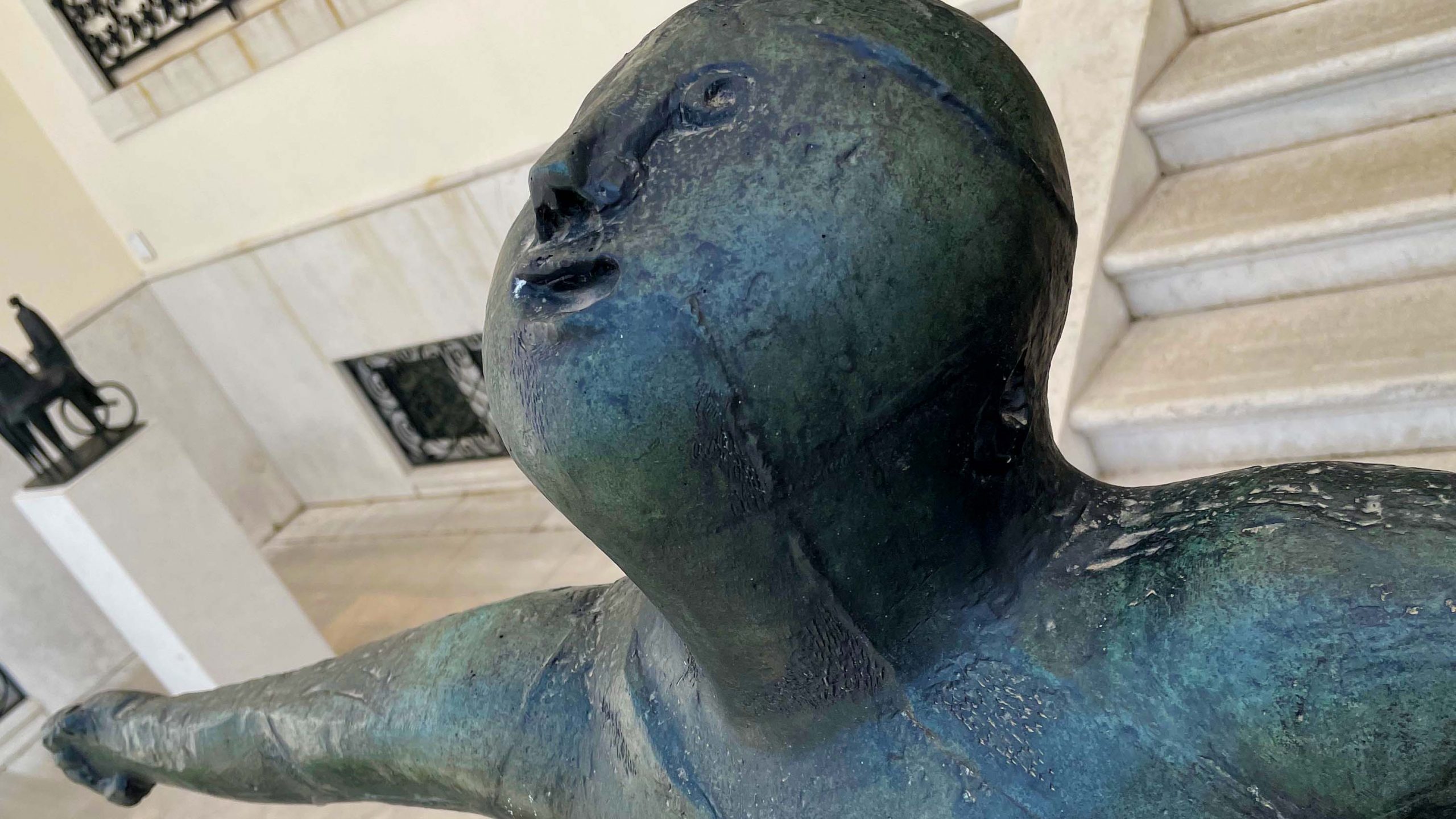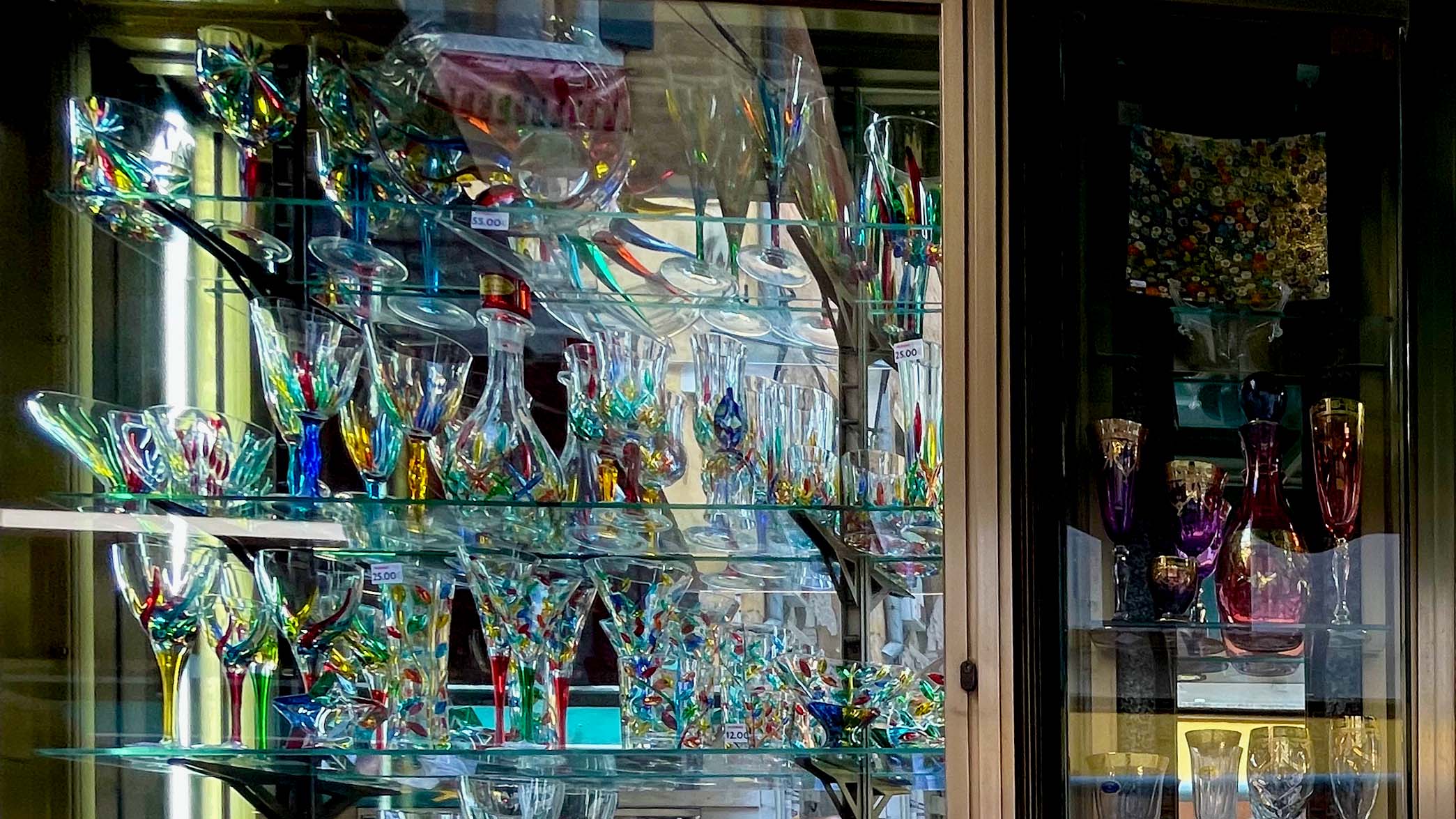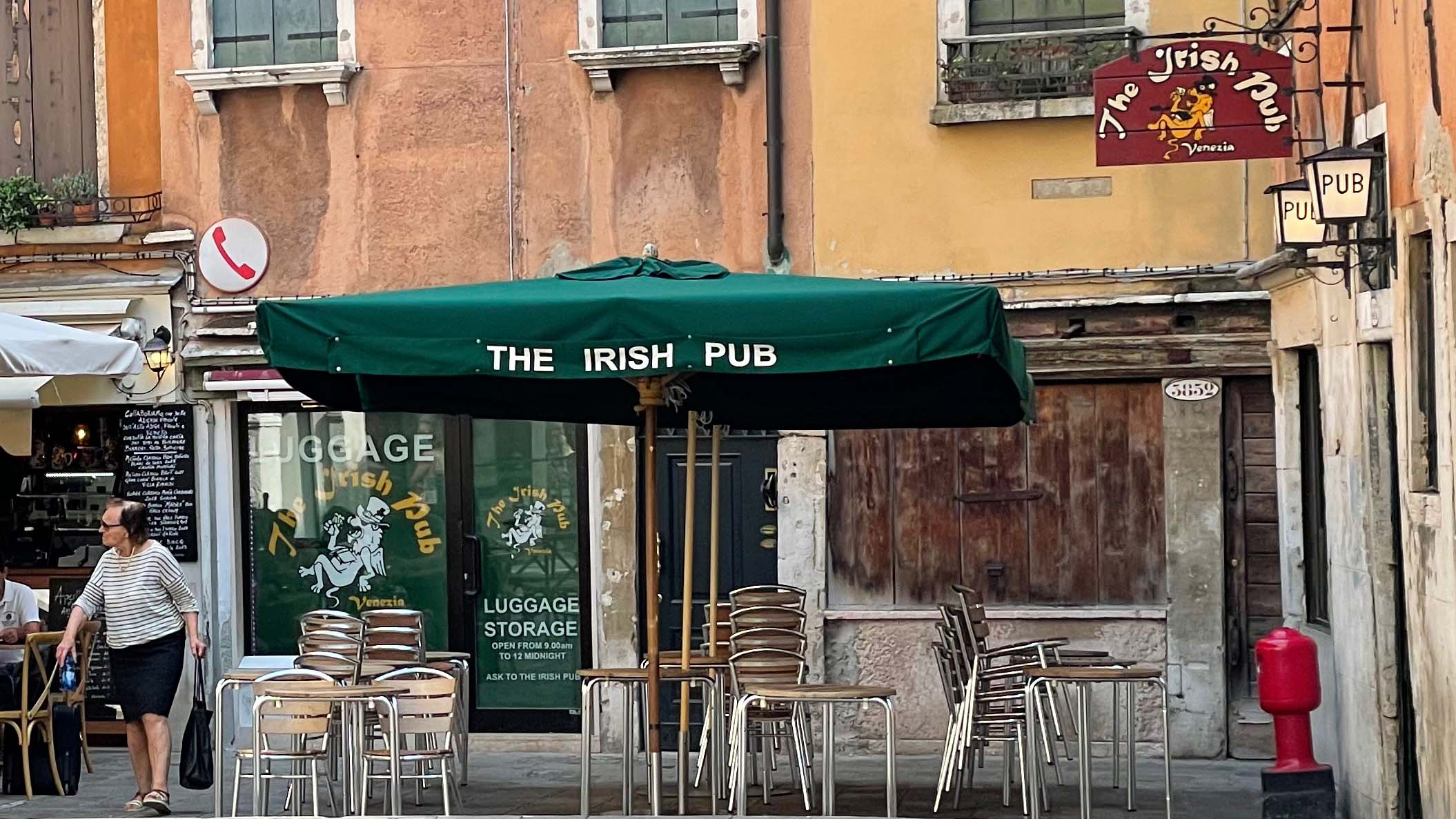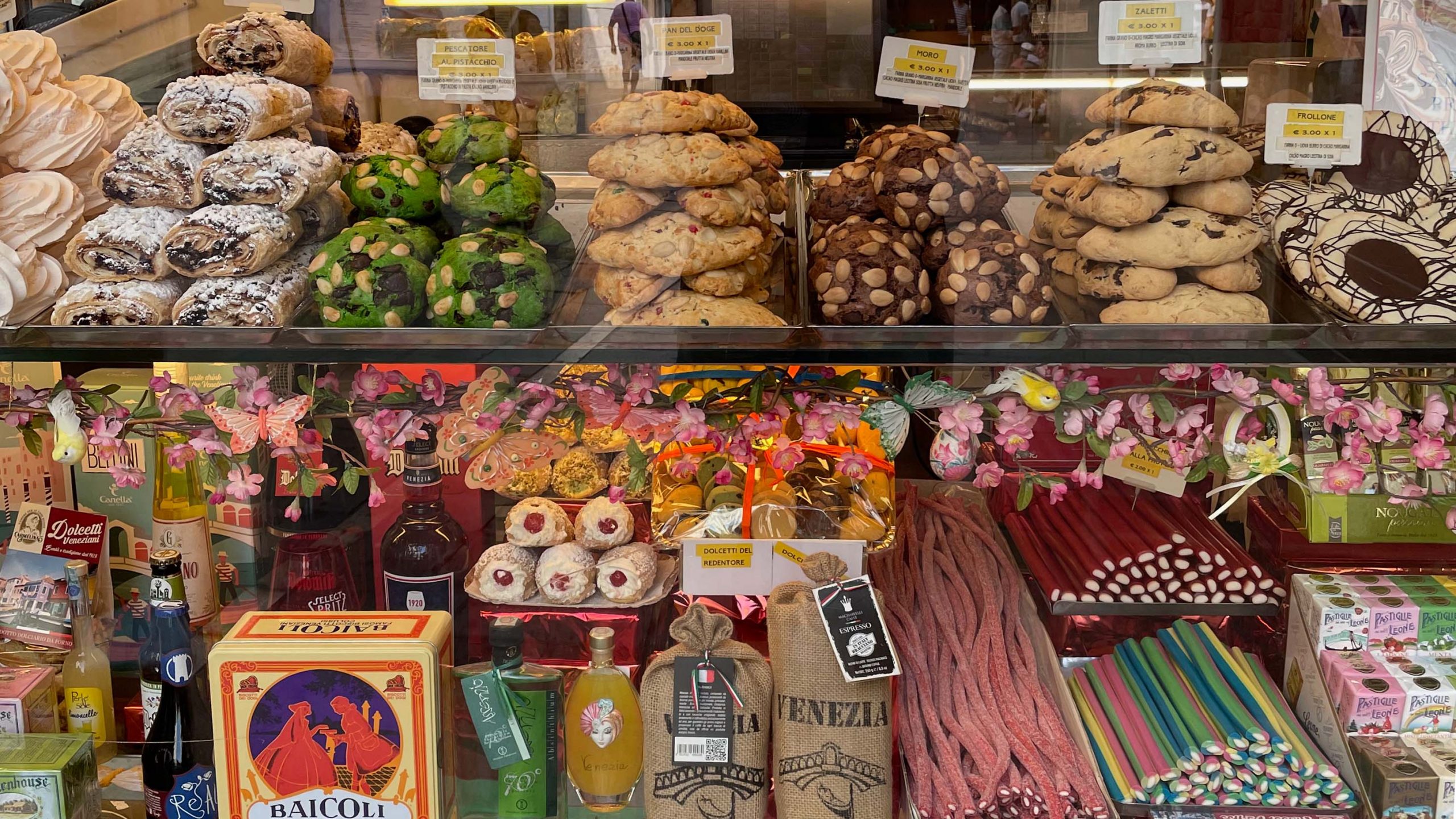25 Jul Venice
The research trip to Venice was my first experience of La Serenissima. It is a city that is a bit notorious for tourist traffic, and being a traveler, the idea of hordes trundling off of cruise ships to make noise, create lines and generally make it hard to get around has never been my idea of a positive travel experience. I was happy to find that the rumors were true that the pandemic and the recent changes to the laws about cruise ship access to the lagoon have made the tourist element tolerable. The main tourist attractions of Piazza San Marco and the Ponte di Rialto were fairly full of people, as was the restaurant area on the Riva del Vin, and we did get our exceptionally pleasant and peaceful morning on Murano somewhat ruined by a cruise ship’s shore boat dropping off a herd for their excursion. Other than that, the experience was largely one view after another of the beautiful entropy that has defined this city for centuries.
Clearly, Venice is not a city for automobiles, so we left my car behind and traveled by train. The new train lines called the frecce are modern and fast, making travel in Italy to major cities by train a very valid choice for transportation. Upon arrival, our first outing was to take a lap around the canals on a water ferry. The ferries can be a useful source of transportation, and if you are quick enough to grab a seat on the bow, they can also provide a fun and picturesque way to get oriented to the layout of the city center. Our hotel sold us 48-hour passes for the ferries, and although we eventually wanted to walk most places to see the things between, the ferry passes were useful for getting out to the islands and for return trips to the hotel when we were just too tired to walk back.
Art abounds in La Serenissima, and between the Guggenheim collection and the various independent galleries that pepper the San Marco neighborhood we saw a wide array of modern and contemporary works over the course of the three days we were there. We also saw many artisans continuing the important historic trades of the city. We watched glass being worked on the island of Murano and Carnival masks being made at Ca ‘Macana Atelier on Rio Terà San Leonardo. Venice is truly a place for visually-oriented travelers.
Although we eventually found a bistro and pub that I liked, I was generally disappointed by the extensive, touristy menus posted outside the restaurants. We tried one for dinner the first night, but the fare was average. A tourist seeing Italy for the first time might be convinced, but we sort of shrugged and looked for something different the following evening. We eventually ran into the Why&Not Bistrot, with a short, locally sourced, somewhat fusion menu with the Irish Pub Venezia next door, both on the Corte dei Pali già Testori just off of the shopping strip that traverses Cannaregio, where I felt like we ate and drank well. Also on the topic of food, Che was particularly enamored by the variety of pastry shops in Venice, stopping more than once at the Pasticceria Dal Mas in Rio Terà Lista di Spagna that had a surprising variety of sweets available and an artistry that pleased the eye as well as the palette.
A perfect location for couples and families, Venice is beautiful and photogenic. Rose peddlers and gondoliers tempt those in the city that seek romantic flair, while tourists line the Rialto bridge in classic Instagram poses, selfie sticks in hand. The canals and bridges lead the traveler through a maze of quaint squares, ornate wells, tiny alleyways, and impossible signage to provide surprising views both by day and by night. Someday I will have the chance to spend more time getting to know this lovely lagoon dripping with history and proudly displaying the effects of time in all of its gorgeous imperfection.
J




